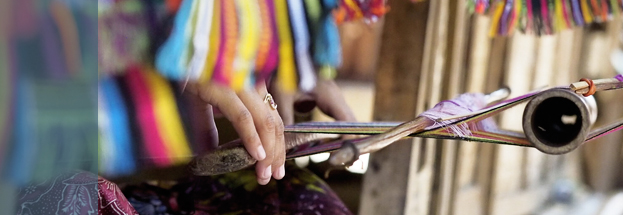Government Backtracks on Date for Prohibiting Deployment of Certain Types of Foreign-Flagged Vessels in Indonesian Waters
Under Minister of Transportation Regulation No. PM 100 of 2016, certain types of foreign-flagged vessels, other than passenger and freight vessels, were permitted to be deployed in Indonesian waters for particular purposes until the end of December 2017 (“Permitted Vessels”). After that date, their use was to be banned. However, this cut-off date was subsequently extended to the end of December 2018 by Minister of Transportation Regulation No. PM 115 of 2017. Now it transpires that the cut-off date has been further pushed back to the end of December 2020 by Minister of Transportation Regulation No. PM 92 of 2018, which entered into force on 25 September 2018.
The types of Permitted Vessels that may be deployed and the operations for which they may be used under Regulation No. PM 92 of 2018 are as follows:
|
Work |
Vessel Type |
|
Offshore Drilling |
|
|
Offshore Construction |
|
|
Oil and Gas Surveys |
Vessels used for seismic, geophysical and/or geotechnical surveys |
|
Dredging |
|
|
Salvage and Subsea Work |
|
|
Offshore Support Operations |
|
|
Floating Power Plants |
All types of floating power plants |
|
Wharf Construction Vessels |
Various types of concrete mixing vessels |
It should be noted that Permitted Vessels may only be deployed if (i) an Indonesian vessel of the same type is unavailable; (ii) the Minister of Transportation grants approval; and (iii) the vessel is operated by a domestic company.
ABNR Commentary
Indonesia has been attempting for many years to promote the development of its national shipping industry through various measures, including the imposition of cabotage restrictions and the application of rules that prevent the operation of foreign vessels for commercial purposes entirely within Indonesian waters. These rules include tight restrictions on the use of specialized foreign-flagged vessels for purposes other than passenger and freight transportation.
However, the need for specialized vessels has been increasing rapidly in Indonesia on the back of the government’s ongoing infrastructure development drive, particularly in the ports, telecommunications and power sectors. This reality is now reflected in Regulation No. PM 92 of 2018, which, for example, exempts foreign-flagged dredging and wharf construction vessels from cabotage restrictions, something that we believe is in anticipation of upcoming port expansion projects by Indonesia’s state-owned port companies.
In the power sector, Indonesia has the greatest number of new-build powerships currently deployed in its waters, with a total of 5 such vessels now supplying 960 MW of electricity.
Due to its strategic location, Indonesia also plays host to one of the highest concentrations of underwater fiber-optic cables carrying internet traffic not only for the islands of the Indonesian but also for neighboring countries. This gives rise to a demand for foreign-flagged cable-laying vessels to work on cable laying and maintenance projects around the country.
In addition, Indonesia urgently needs to find new oil reserves, which gives rise to significant demand for seismic, geophysical and/or geotechnical-survey vessels.
By Sahat A. M. Siahaan (ssiahaan@abnrlaw.com) and Muhammad Muslim (mmuslim@abnrlaw.com)
More Legal Updates
- 10 Dec 2025 ABNR Ranked in Band 1 Chambers FinTech Legal 2026
- 09 Dec 2025 ABNR Successfully Assists POSCO International on Landmark Acquisition of Sampoerna Agro
- 04 Dec 2025 ABNR Advises on Indonesian Legal Aspects of Infinity Development Holdings’ Singapore IPO
- 24 Nov 2025 The Fourth Amendment to the SOE Law: Institutional Realignment and Strategic Reform
- 18 Nov 2025 At long last: Indonesia is set to issue a landmark crypto offering regime
- 14 Nov 2025 ABNR Advises Telkom Indonesia on USD 2.16 Billion Partial Spin-Off of Its Wholesale Fiber Connectivity Business and Assets
NEWS DETAIL
07 Nov 2018
Government Backtracks on Date for Prohibiting Deployment of Certain Types of Foreign-Flagged Vessels in Indonesian Waters
Under Minister of Transportation Regulation No. PM 100 of 2016, certain types of foreign-flagged vessels, other than passenger and freight vessels, were permitted to be deployed in Indonesian waters for particular purposes until the end of December 2017 (“Permitted Vessels”). After that date, their use was to be banned. However, this cut-off date was subsequently extended to the end of December 2018 by Minister of Transportation Regulation No. PM 115 of 2017. Now it transpires that the cut-off date has been further pushed back to the end of December 2020 by Minister of Transportation Regulation No. PM 92 of 2018, which entered into force on 25 September 2018.
The types of Permitted Vessels that may be deployed and the operations for which they may be used under Regulation No. PM 92 of 2018 are as follows:
|
Work |
Vessel Type |
|
Offshore Drilling |
|
|
Offshore Construction |
|
|
Oil and Gas Surveys |
Vessels used for seismic, geophysical and/or geotechnical surveys |
|
Dredging |
|
|
Salvage and Subsea Work |
|
|
Offshore Support Operations |
|
|
Floating Power Plants |
All types of floating power plants |
|
Wharf Construction Vessels |
Various types of concrete mixing vessels |
It should be noted that Permitted Vessels may only be deployed if (i) an Indonesian vessel of the same type is unavailable; (ii) the Minister of Transportation grants approval; and (iii) the vessel is operated by a domestic company.
ABNR Commentary
Indonesia has been attempting for many years to promote the development of its national shipping industry through various measures, including the imposition of cabotage restrictions and the application of rules that prevent the operation of foreign vessels for commercial purposes entirely within Indonesian waters. These rules include tight restrictions on the use of specialized foreign-flagged vessels for purposes other than passenger and freight transportation.
However, the need for specialized vessels has been increasing rapidly in Indonesia on the back of the government’s ongoing infrastructure development drive, particularly in the ports, telecommunications and power sectors. This reality is now reflected in Regulation No. PM 92 of 2018, which, for example, exempts foreign-flagged dredging and wharf construction vessels from cabotage restrictions, something that we believe is in anticipation of upcoming port expansion projects by Indonesia’s state-owned port companies.
In the power sector, Indonesia has the greatest number of new-build powerships currently deployed in its waters, with a total of 5 such vessels now supplying 960 MW of electricity.
Due to its strategic location, Indonesia also plays host to one of the highest concentrations of underwater fiber-optic cables carrying internet traffic not only for the islands of the Indonesian but also for neighboring countries. This gives rise to a demand for foreign-flagged cable-laying vessels to work on cable laying and maintenance projects around the country.
In addition, Indonesia urgently needs to find new oil reserves, which gives rise to significant demand for seismic, geophysical and/or geotechnical-survey vessels.
By Sahat A. M. Siahaan (ssiahaan@abnrlaw.com) and Muhammad Muslim (mmuslim@abnrlaw.com)



